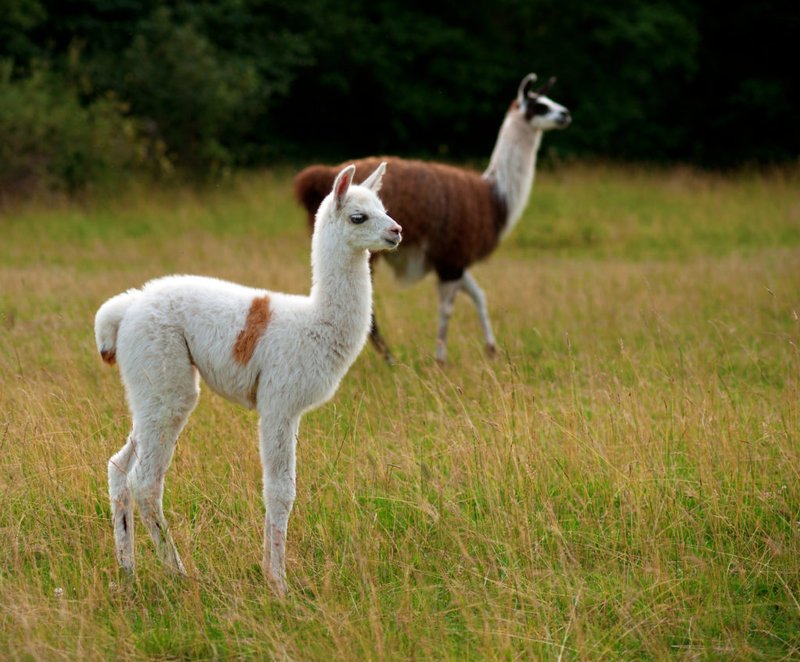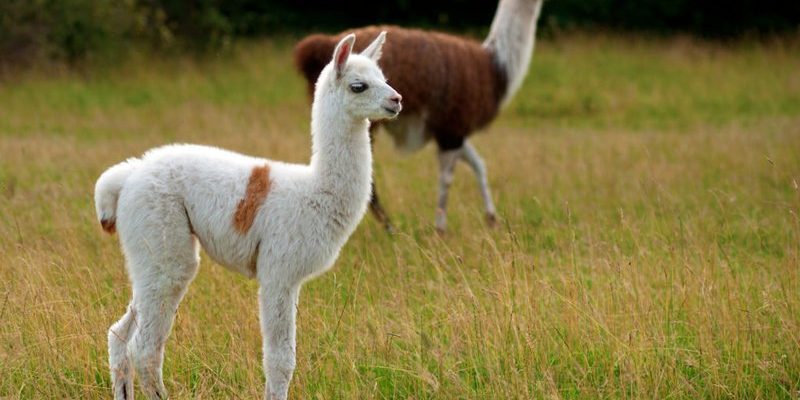
In the wild or in captivity, the lifespan of a llama can vary quite a bit. Think of it like comparing a road trip in a sturdy, comfortable vehicle versus a bumpy ride on a back road. The conditions they live in—like food, shelter, health care, and social interaction—play a huge role in how long they thrive. Let’s dive into the fascinating world of llamas and explore their longevity, especially in captivity.
Understanding Llama Lifespan
Llamas typically live around 15 to 25 years in captivity. This is quite impressive when you think about it! It’s not uncommon for a well-cared-for llama to reach their late teens or even early twenties. For instance, you might hear stories of pet llamas living well into their twenties, enjoying a life filled with the right nutrition and ample companionship.
In the wild, though, their lifespan tends to shorten. Here, they face the constant challenges of predators, extreme weather, and the struggle for food. So, while llamas might have a longer life in a safe, controlled environment, it’s nature’s unpredictability that often determines how long they live in the great outdoors.
Factors Influencing Llama Lifespan
Several factors can affect a llama’s lifespan, and understanding them is key to ensuring your llama lives its best life.
- Nutrition: Just like us, llamas thrive on a balanced diet. Good quality hay, grains, and fresh water are essential. A well-fed llama is a happy llama, and happy llamas tend to live longer.
- Healthcare: Regular veterinary check-ups are crucial. Vaccinations, dental care, and just keeping an eye on their health can help catch problems early.
- Environment: Llamas prefer spacious, clean living conditions. A cozy shelter and plenty of room to roam can significantly impact their wellbeing.
- Social Interaction: Llamas are social animals. Having companions can reduce stress and improve their overall mood, contributing positively to their lifespan.
Consider this: if a llama is living in a cramped space with limited food and no buddies to hang out with, they might not live as long as one in a spacious pasture with plenty of friends.
Common Health Issues in Llamas
Just like any pet, llamas can face health issues that may impact their longevity. Here are a few common problems to watch for:
- Parasites: These little invaders can be tough on llamas. Regular deworming and maintaining a clean living environment can help keep these pests at bay.
- Dental Issues: Llamas need dental care just like we do. Their teeth can overgrow and cause pain, so routine checks are essential.
- Respiratory Problems: Llamas are sensitive to dust and damp conditions. Proper ventilation and clean bedding can help prevent respiratory issues.
Being proactive about these health concerns not only helps your llama live longer but also ensures they’re comfortable and happy throughout their life.
Captivity vs. Wild: A Comparison
When you compare the lifespan of llamas in captivity versus the wild, it’s like looking at two very different worlds. In captivity, llamas benefit from:
- Regular Nutrition: They get a steady diet, unlike the unpredictable food sources in the wild.
- Veterinary Care: Access to healthcare means they’re treated for ailments before they become serious.
- A Safe Environment: The risks of predators and harsh elements are minimized, leading to less stress and better health.
In the wild, while llamas are agile and resilient, they have to deal with threats all the time. They may face hunger or disease, which can significantly cut their lifespan. Essentially, captivity offers a more cushy lifestyle—think of it as getting to live in a well-furnished home instead of a tent in the wilderness.
How to Care for Your Llama for Longevity
If you’re lucky enough to have a llama or are considering getting one, here’s how to help ensure they live a long, healthy life:
- Provide a Balanced Diet: Make sure they have high-quality hay and fresh water every day. Adding grains or supplements can also boost their energy levels.
- Schedule Regular Vet Visits: Don’t skip those check-ups! A vet can help catch any potential health issues early.
- Create a Comfortable Living Space: Ensure they have a clean, spacious area to roam and play, with shelter to protect them from the elements.
- Facilitate Socialization: If possible, keep more than one llama. They thrive on social interactions, and having a buddy can keep them happy and mentally stimulated.
By following these tips, you’re laying the groundwork for a happy, healthy llama that can be a part of your life for many years.
In the end, the lifespan of a llama often hinges on the care they receive. With proper attention and a loving environment, these wonderful creatures can live up to 25 years in captivity, bringing joy and companionship along the way.
So whether you’re considering adopting a llama or simply exploring their world, remember: a little love, care, and understanding go a long way in ensuring a long and fulfilling life for these charming animals. Recognizing their needs—like good nutrition, healthcare, and social interaction—makes all the difference. After all, life with a llama can be an adventure; let’s make it a long and happy one!

